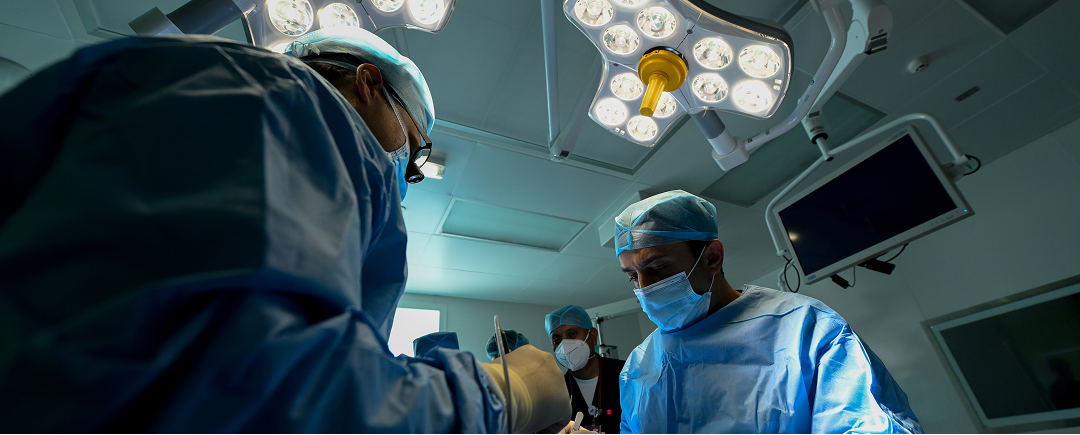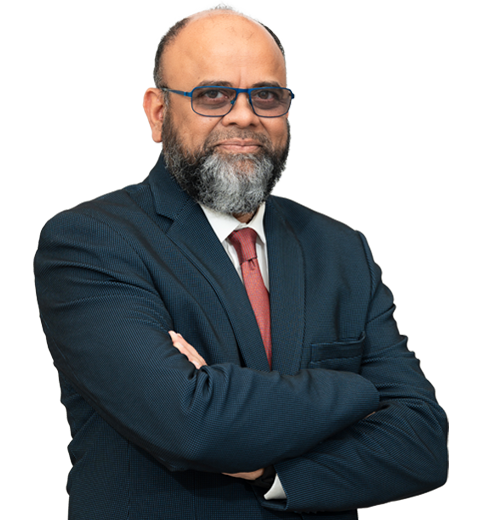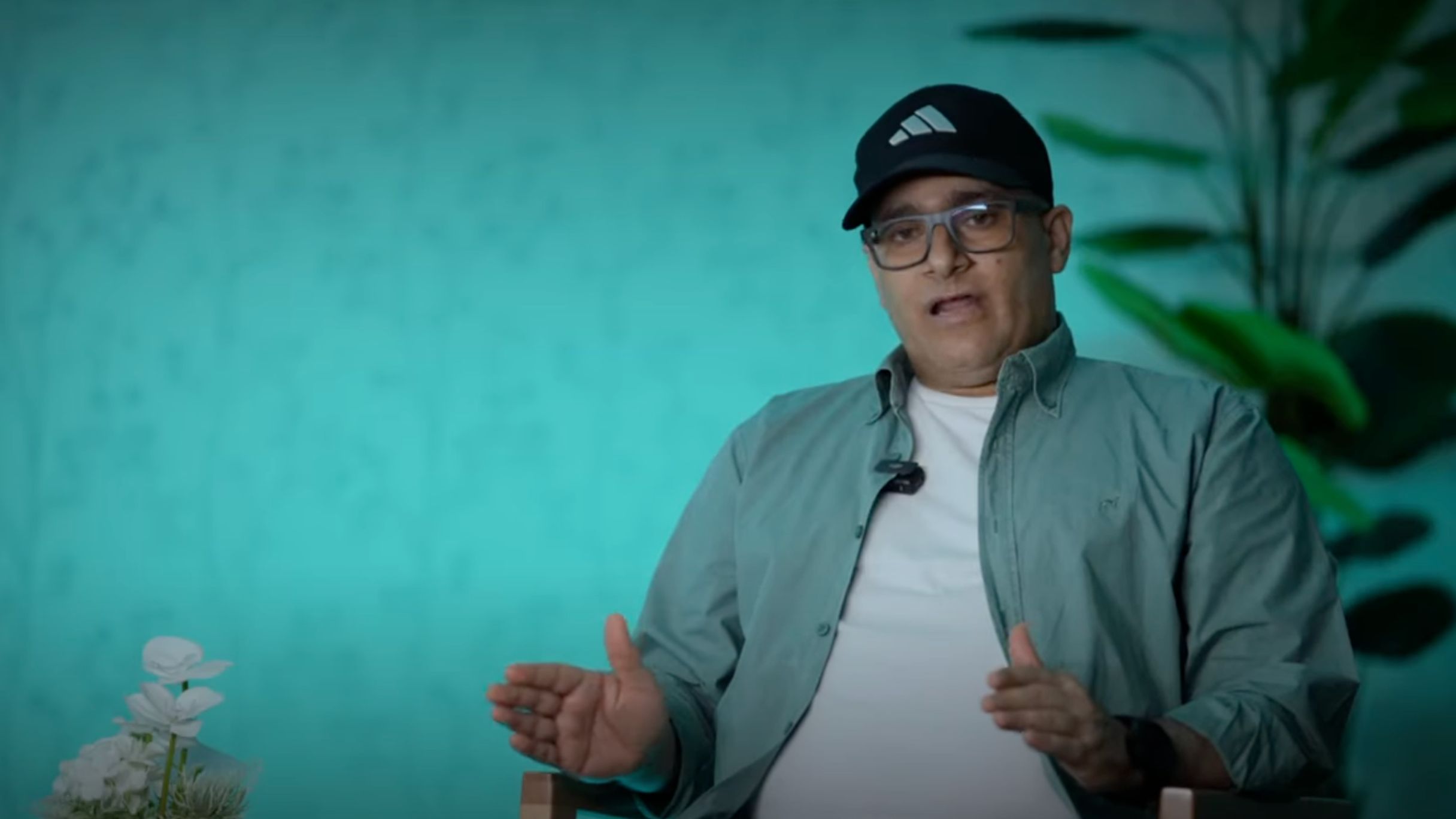
Thoracic Surgery
Minimally Invasive & Robotic Thoracic Surgery for Lung, Esophageal, and Mediastinal Disorders and Chest Trauma.
Precise oncologic resections, enhanced recovery, and multidisciplinary cancer care—tailored to every patient.
The Thoracic Surgery Service offers comprehensive diagnostic and therapeutic care for lung, esophagus, mediastinum, pleura, and chest wall disorders. We employ cutting-edge technology, including robotic systems and intraoperative imaging, while collaborating closely with specialists across pulmonology, oncology, radiology, and gastroenterology. Our patient-centered approach ensures that each treatment plan aligns with the latest evidence and optimizes recovery.
1
Board-certified thoracic surgeon (robotic, oncologic, airway, esophageal)100+
thoracic procedures performed annually with 90% done minimally invasively3 days
Median length of stay post-robotic surgeries30-day
operative mortality rate for anatomic lung resections: <0.5% (global benchmark)Common Conditions & Subspecialty Clinics.
- Pectus excavatum (minimally invasive Nuss procedure)
- Pectus carinatum
- Surgical stabilization of flail chest
- Tracheal stenosis (benign or post-intubation)
- Tracheobronchomalacia
- Tracheal resection with primary anastomosis
- Video-assisted thoracoscopic surgery (VATS) lobectomy
- Robotic segmentectomy
- Uni-portal VATS techniques
- Sub-xiphoid thymectomy for anterior mediastinal masses
- Recurrent or spontaneous pneumothorax
- Chronic or malignant pleural effusion
- Empyema requiring decortication
- Malignant pleural mesothelioma
- Thymoma and thymic carcinoma
- Mediastinal germ-cell tumors
- Chest-wall sarcomas
- Chest-wall reconstruction post-oncologic resection
- Esophageal carcinoma
- High-grade Barrett’s esophagus with dysplasia
- Achalasia
- Esophageal diverticulum
- GERD with surgical indications (e.g., failed medical therapy, Barrett’s)
- Early-stage non-small cell lung cancer (NSCLC)
- Segmentectomy or lobectomy
- Sleeve resection for central tumors
Procedures & Treatments.
Nuss & Modified Ravitch Repair for pectus deformities
Uni-portal VATS Lobectomy & Wedge Resection for peripheral nodules
Robotic Thymectomy & Mediastinal Mass Resection (sub-xiphoid or lateral ports)
Robotic Lobectomy & Segmentectomy (da Vinci Xi)
Tracheal Resection & End-to-End Anastomosis with ECMO standby
Chest-Wall Resection with 3D-Printed Titanium Prosthesis
Extrapleural Pneumonectomy (EPP) for mesothelioma
Sleeve Lobectomy & Carinal Resection with bronchoplastic techniques
Onsite oncology and radiation therapy for multimodal cancer care
Smoking-cessation and pulmonary rehab pre-hab clinics
Early mobilization and incentive spirometry guided by physiotherapy
ERAS protocol with paravertebral block and opioid-sparing analgesia
Indocyanine-Green (ICG) Fluorescence for segmental perfusion mapping
Cryobiopsy for interstitial lung disease (with Pulmonology)
Endobronchial Ultrasound (EBUS-TBNA) for mediastinal staging (with Pulmonology)
Care Pathway & Coordination.
Fast-Track Referral & Imaging
CT scan reviewed within 24 hours; PET-CT and pulmonary-function tests scheduled within 72 hours.
Thoracic Tumor Board / Case Conference
Surgeons, oncologists, pulmonologists, and radiologists decide on the optimal treatment plan.
Pre-habilitation & Optimization
Smoking cessation, respiratory physiotherapy, nutrition consultation.
Definitive Surgery / Intervention
Robotic, VATS, or open surgery with intraoperative pathology and frozen-section margin assessment.
Enhanced Recovery
ERAS pain control, chest-tube algorithm, early ambulation; discharge goal is POD 3–5 for lobectomy, POD 1–2 for wedge.
Post-Operative Surveillance
CT scans at 3, 6, and 12 months; oncology follow-up for adjuvant therapy as indicated
Technology & Facilities.
da Vinci Xi & SP Robotic Platforms
Multi-port and single-port thoracic capability
Hybrid OR with Cone-Beam CT
Real-time 3D imaging for lesion localization and wire-free nodule resection
Indocyanine-Green Fluorescence Imaging
Segmental identification and perfusion assessment
3D Printed Chest-Wall Prosthesis Lab
Custom titanium implants produced within 48 hours
High-Flow Nasal Oxygen & Enhanced Recovery Unit
Facilitates early extubation and reduced ICU stay



